Export Procedure for India: IEC Code 2024
Introduction to IEC Code
The Import Export Code (IEC) is a key business identification number necessary for the export or import of goods and services from India. This ten-digit code is issued by the Directorate General of Foreign Trade (DGFT) and is valid for a lifetime. Without an IEC, businesses cannot engage in international trade, making it one of the most crucial requirements for Indian exporters and importers. In 2024, understanding the IEC Code and the procedures associated with it is vital for anyone looking to expand their business globally.
Regulatory Landscape for Indian Trade
India’s trade landscape is governed by various laws, regulations, and policies designed to facilitate and monitor international trade. The Foreign Trade Policy (FTP), which is periodically updated by the Ministry of Commerce and Industry, sets the framework for trade regulations. The FTP outlines incentives for exporters, duties, tariffs, and other guidelines that traders must adhere to.
The Customs Act of 1962, Foreign Exchange Management Act (FEMA), and the Goods and Services Tax (GST) are other significant regulations that impact imports and exports. Compliance with these regulations is mandatory to avoid legal issues and ensure smooth trading operations.
Importing into India: Procedures and Considerations
Importing goods into India involves several steps and considerations to ensure compliance with local regulations. Here’s a brief overview of the procedure:
- Obtain an IEC Code: The first step for any importer is to obtain the IEC code from DGFT.
- Determine the Customs Duty: Importers must be aware of the applicable customs duties for their goods, which can be found in the Customs Tariff Act.
- Check the Goods and Services Tax (GST): Ensure that the applicable GST is accounted for in the pricing.
- Submit Import Declaration: File an Import Declaration form with the Customs department.
- Shipping and Delivery: Arrange for shipping and delivery through a registered shipping agent. Ensure that the Bill of Entry is filed within 30 days of the arrival of goods.
- Clearance from Customs: The goods will be inspected, and customs duties must be paid before they are released.
India’s Import and Export Documentation Checklist
Proper documentation is essential to avoid delays and penalties in international trade. Here’s a checklist of the essential documents required for importing and exporting in India:
- Bill of Lading or Airway Bill
- Commercial Invoice
- Packing List
- Certificate of Origin
- Shipping Bill or Bill of Entry
- Insurance Certificate
- Letter of Credit or other payment terms
- Customs Declaration Form
Each document plays a crucial role in the processing of goods through customs and ensures that the transaction complies with international trade regulations.
Steps for IEC (Import/Export Code) Registration
Obtaining an IEC is a straightforward process but requires careful attention to detail. Below are the steps involved:
- Online Application: Visit the DGFT website and navigate to the IEC section. Fill out the application form online.
- Upload Documents: You will need to upload supporting documents such as a PAN card, passport-size photograph, and address proof of the business.
- Pay the Application Fee: A nominal fee is charged for the IEC application. Make sure to pay this fee online.
- Submit the Application: After completing the form and payment, submit the application. You will receive an acknowledgment and a reference number.
- Issuance of IEC: Once the application is verified, the IEC will be issued and can be downloaded from the DGFT website.
Export from India with CBM Ship
CBM Ship is a leading logistics company specializing in international trade solutions. For businesses looking to export from India, CBM Ship offers a seamless experience, managing everything from shipping and customs clearance to documentation and delivery. Their expertise in handling complex logistics ensures that goods are delivered on time and in perfect condition, helping exporters focus on growing their business rather than getting bogged down by logistics.
Economic Overview of India in 2024
India’s economy in 2024 is projected to grow steadily, driven by both domestic consumption and international trade. The government’s emphasis on “Make in India” and other export-promotion policies has positioned India as a significant player in global trade. The introduction of new trade agreements and infrastructure projects will further boost India’s export capabilities, making it an attractive market for global businesses.
Challenges in India’s Import and Export Landscape
Despite the growth, there are several challenges that exporters and importers face in India:
- Regulatory Compliance: Navigating the complex regulatory environment requires constant vigilance.
- Logistics and Infrastructure: While improving, India’s infrastructure still poses challenges, especially in rural areas.
- Currency Fluctuations: Volatile exchange rates can impact the profitability of international trade.
- Quality Standards: Meeting international quality standards is essential for maintaining a competitive edge in global markets.
Major Exports from India
India is known for exporting a diverse range of products. Some of the major exports include:
- Textiles and Apparel: India is one of the largest textile exporters in the world.
- Gems and Jewelry: India is renowned for its diamond cutting and jewelry manufacturing industry.
- Agricultural Products: Spices, tea, and rice are some of the most exported agricultural products.
- Pharmaceuticals: India is a leading exporter of generic drugs and pharmaceuticals.
- Automobile Parts: The automotive industry in India is a significant contributor to exports.
Conclusion
Understanding the export procedure and obtaining an IEC Code is crucial for businesses looking to enter the global market from India. With the right documentation, compliance with regulations, and a reliable logistics partner like CBM Ship, businesses can navigate the complexities of international trade and achieve success in exporting from India.
Frequently Asked Questions (FAQs) About the Export Procedure for India
- What is the IEC Code, and why do I need it for exporting from India?
- The Import Export Code (IEC) is a 10-digit code issued by the Directorate General of Foreign Trade (DGFT) in India. It is mandatory for any business or individual to obtain an IEC if they wish to export or import goods or services from India. Without an IEC, you cannot engage in international trade.
- How do I apply for an IEC Code in India?
- To apply for an IEC Code, you need to visit the DGFT website and fill out the online application form. You will need to upload necessary documents such as a PAN card, a passport-size photograph, and address proof. Once the application is submitted and verified, you will receive your IEC Code online.
- Can I use a single IEC Code for multiple businesses?
- Yes, a single IEC Code can be used for multiple businesses or branches owned by the same entity. The IEC Code is linked to the PAN number of the business, so as long as the PAN number is the same, the IEC can be used for all branches.
- Is there a renewal process for the IEC Code?
- No, the IEC Code is valid for a lifetime and does not require renewal. However, it is important to keep your IEC details updated in case of any changes in your business information.
- What are the penalties for not having an IEC Code when exporting?
- If you export goods or services without an IEC Code, your shipments can be held up by customs, leading to delays and potential fines. Additionally, you may not be able to claim export incentives or benefits offered by the Indian government.
- What are the documents required for exporting goods from India?
- The essential documents required for exporting goods from India include the Bill of Lading or Airway Bill, Commercial Invoice, Packing List, Certificate of Origin, Shipping Bill, Insurance Certificate, and a Customs Declaration Form.
- How long does it take to get an IEC Code?
- The process of obtaining an IEC Code usually takes 1 to 2 working days after the submission of a complete application and payment of the fee. The IEC Code will be issued online, and you can download it from the DGFT website.
- Can I export services from India with an IEC Code?
- Yes, the IEC Code is required for exporting both goods and services from India. It acts as an identification number for businesses engaged in international trade and is essential for claiming export benefits.
- What should I do if my IEC Code is lost or misplaced?
- If your IEC Code is lost or misplaced, you can download it again from the DGFT website using your login credentials. There is no need to apply for a new IEC Code as it remains valid for a lifetime.
- Are there any exemptions for obtaining an IEC Code?
- Certain categories of exporters, such as those involved in the import and export of goods for personal use or those exporting services up to a specified limit, may be exempt from obtaining an IEC Code. However, it is advisable to consult with the DGFT or a legal expert to understand the specific exemptions applicable to your case.




Comments are closed